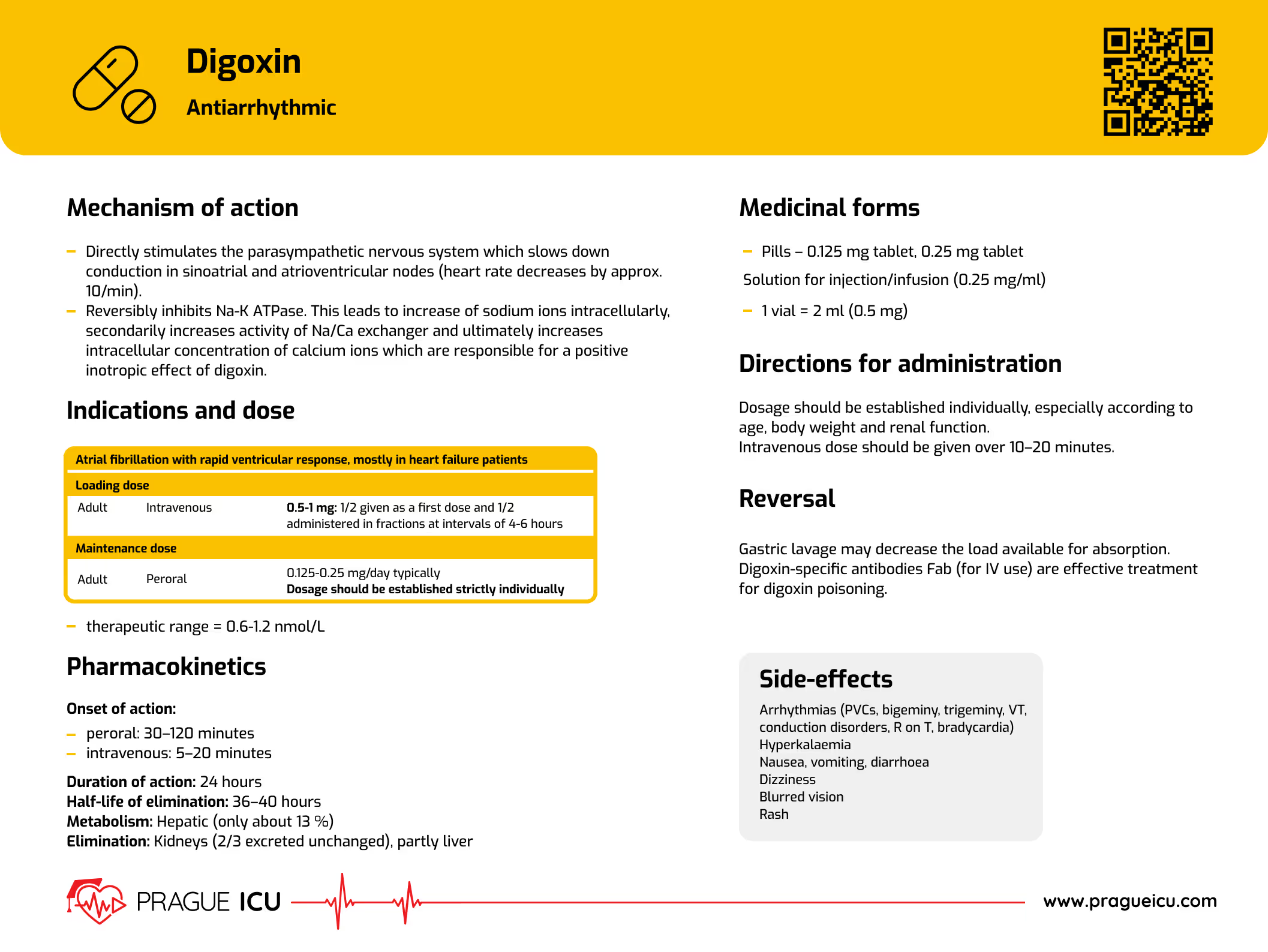
Mechanism of action
- Directly stimulates the parasympathetic nervous system which slows down conduction in sinoatrial and atrioventricular nodes (heart rate decreases by approx.10/min).
- Reversibly inhibits Na-K ATPase. This leads to increase of sodium ions intracellularly, secondarily increases activity of Na/Ca exchanger and ultimately increases intracellular concentration of calcium ions which are responsible for a positive inotropic effect of digoxin.
Indications and dose
Atrial fibrillation with rapid ventricular response, mostly in heart failure patients

- therapeutic range = 0.6-1.2 nmol/L
Pharmacokinetics
Onset of action:
- peroral: 30–120 minutes
- intravenous: 5–20 minutes
Duration of action: 24 hours
Half-life of elimination: 36–40 hours
Metabolism: Hepatic (only about 13 %)
Elimination: Kidneys (2/3 excreted unchanged), partly liver
Directions for administration
Dosage should be established individually, especially according to age, body weight and renal function.
Intravenous dose should be given over 10–20 minutes.
Medicinal forms
Pills – 0.125 mg tablet, 0.25 mg tablet
Solution for injection/infusion (0.25 mg/ml)
- 1 vial = 2 ml (0.5 mg)
Side-effects
Arrhythmias (PVCs, bigeminy, trigeminy, VT, conduction disorders, R on T, bradycardia)
Hyperkalaemia
Nausea, vomiting, diarrhoea
Dizziness
Blurred vision
Rash
Reversal
Gastric lavage may decrease the load available for absorption.
Digoxin-specific antibodies Fab (for IV use) are effective treatment for digoxin poisoning.
References
- Digoxin 0.0625mg tablets - Summary of Product Characteristics (SmPC) - (emc) (medicines.org.uk)
- Digoxin 250 microgram/ml solution for injection/infusion - Summary of Product Characteristics (SmPC) - (emc) (medicines.org.uk)
- Pharm 101: Digoxin • LITFL • Top 200 Drugs
- Digoxin: Uses, Interactions, Mechanism of Action | DrugBank Online
- Digoxin - an overview | ScienceDirect Topics



